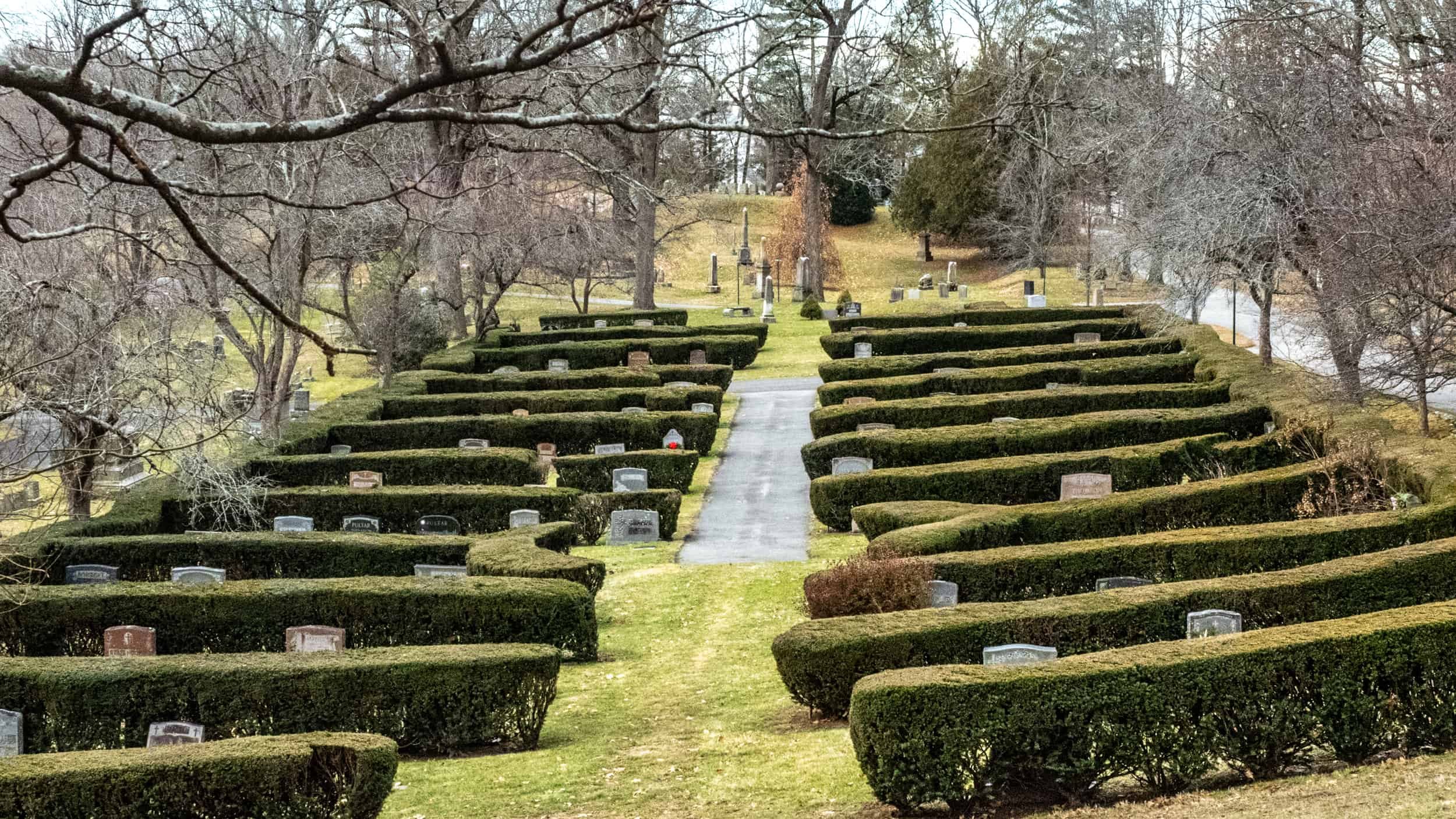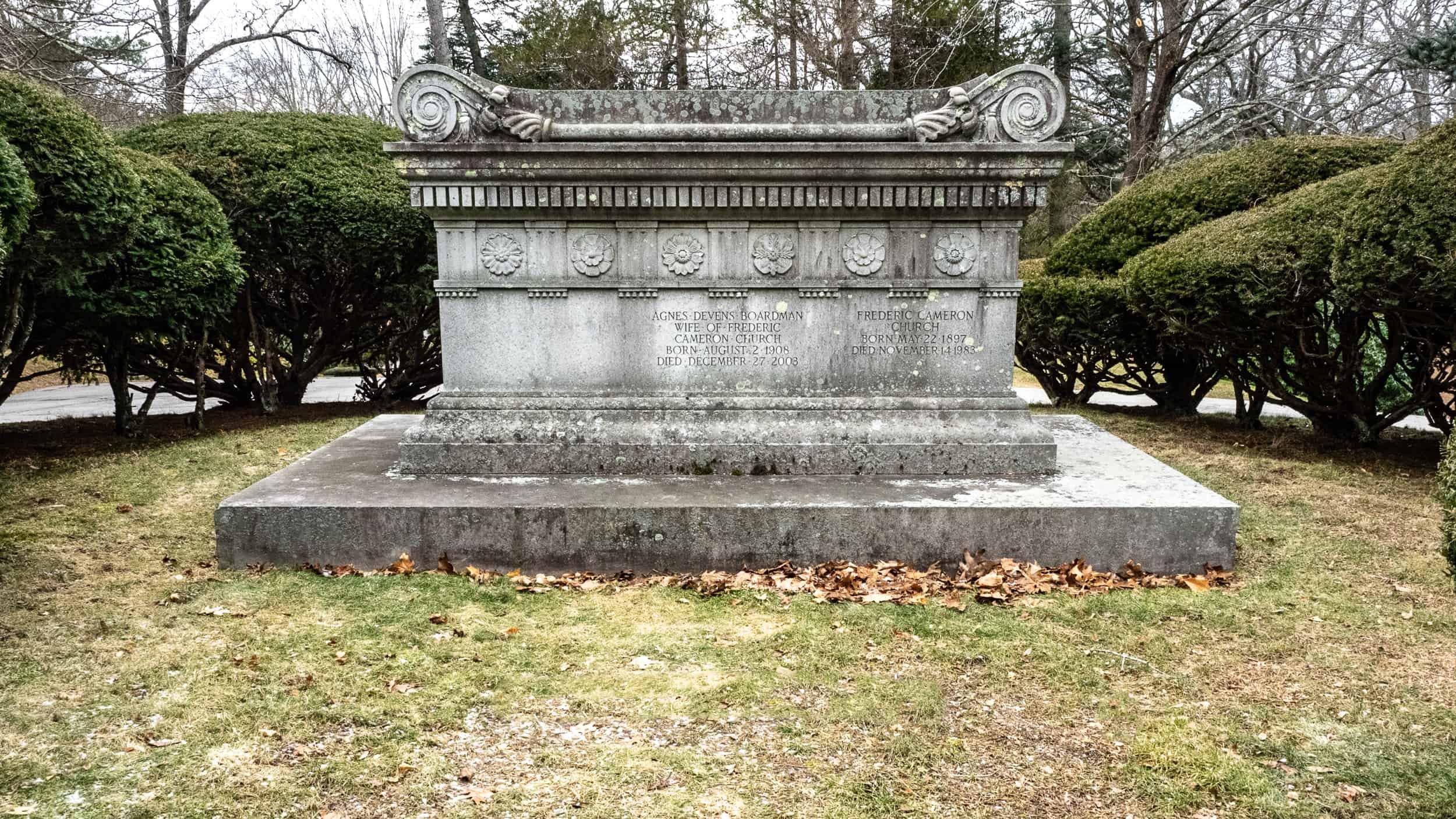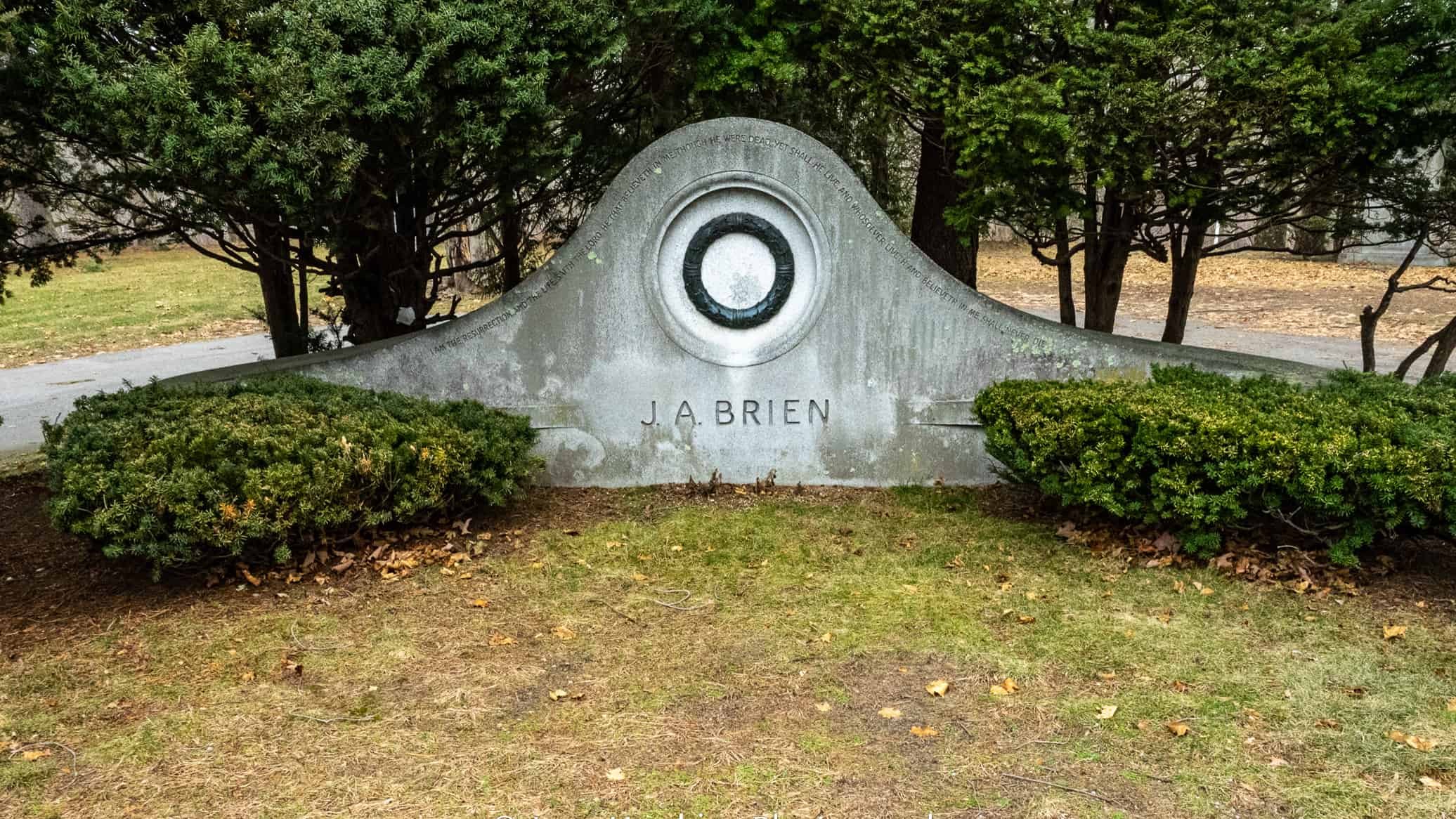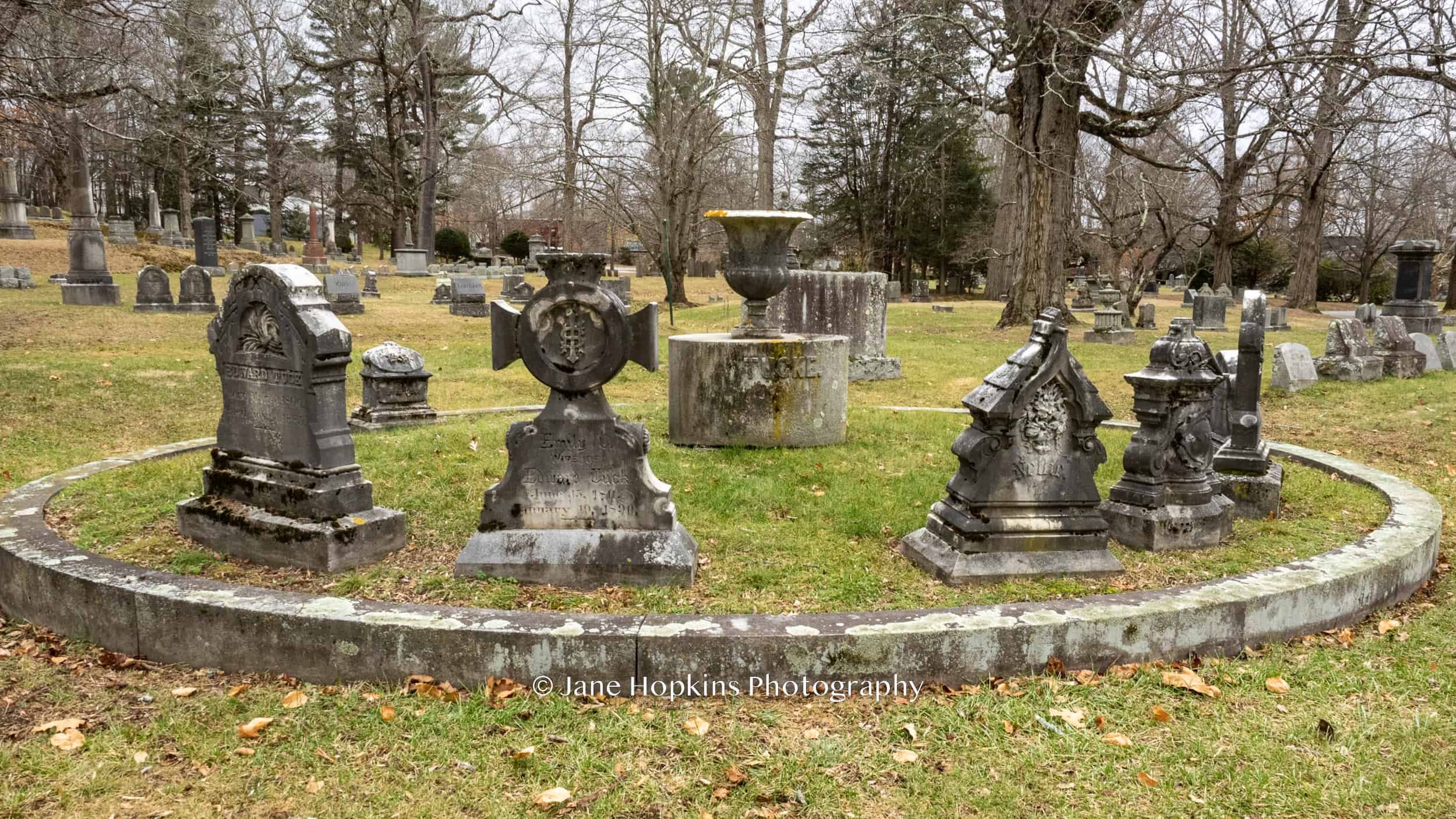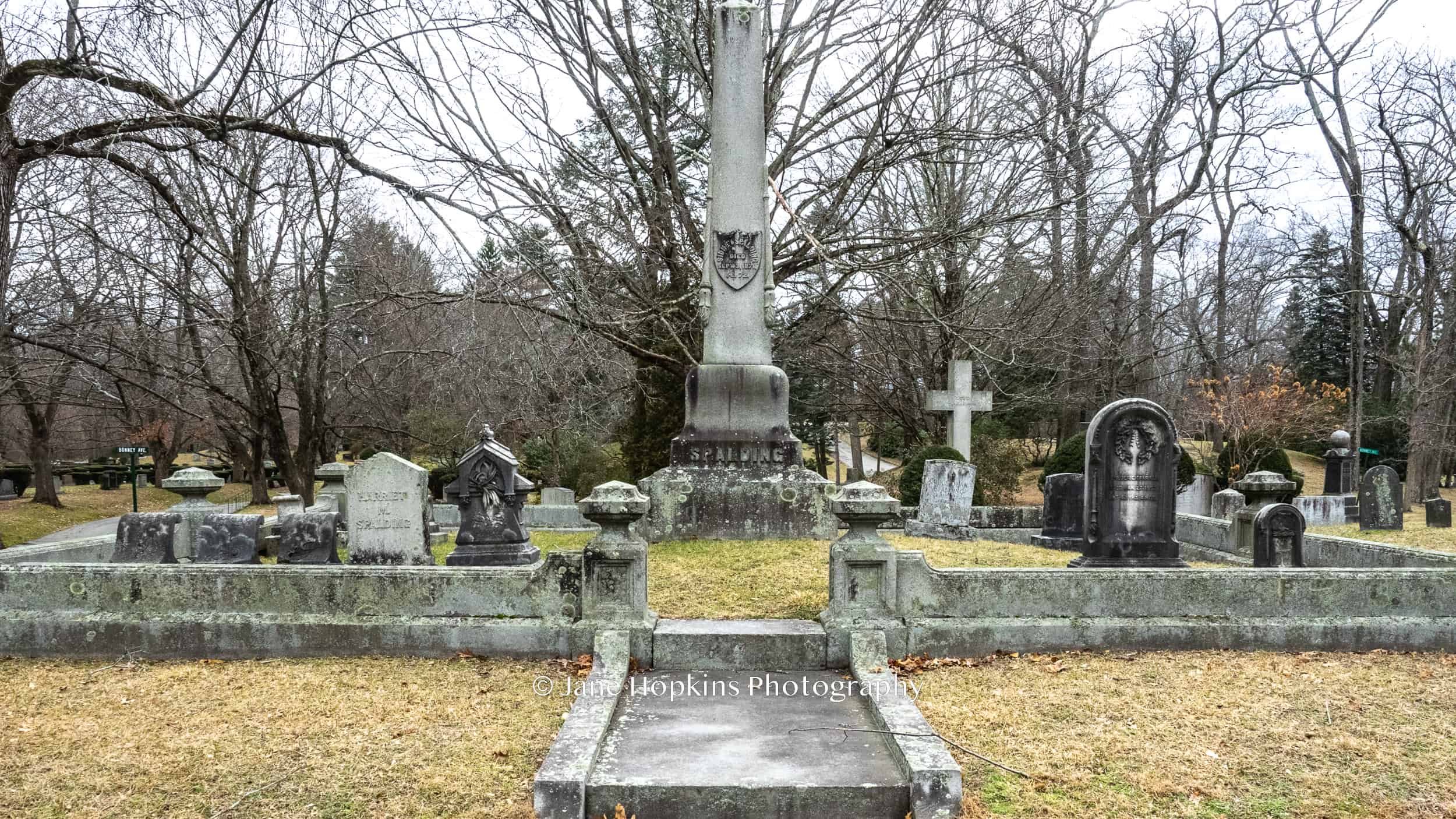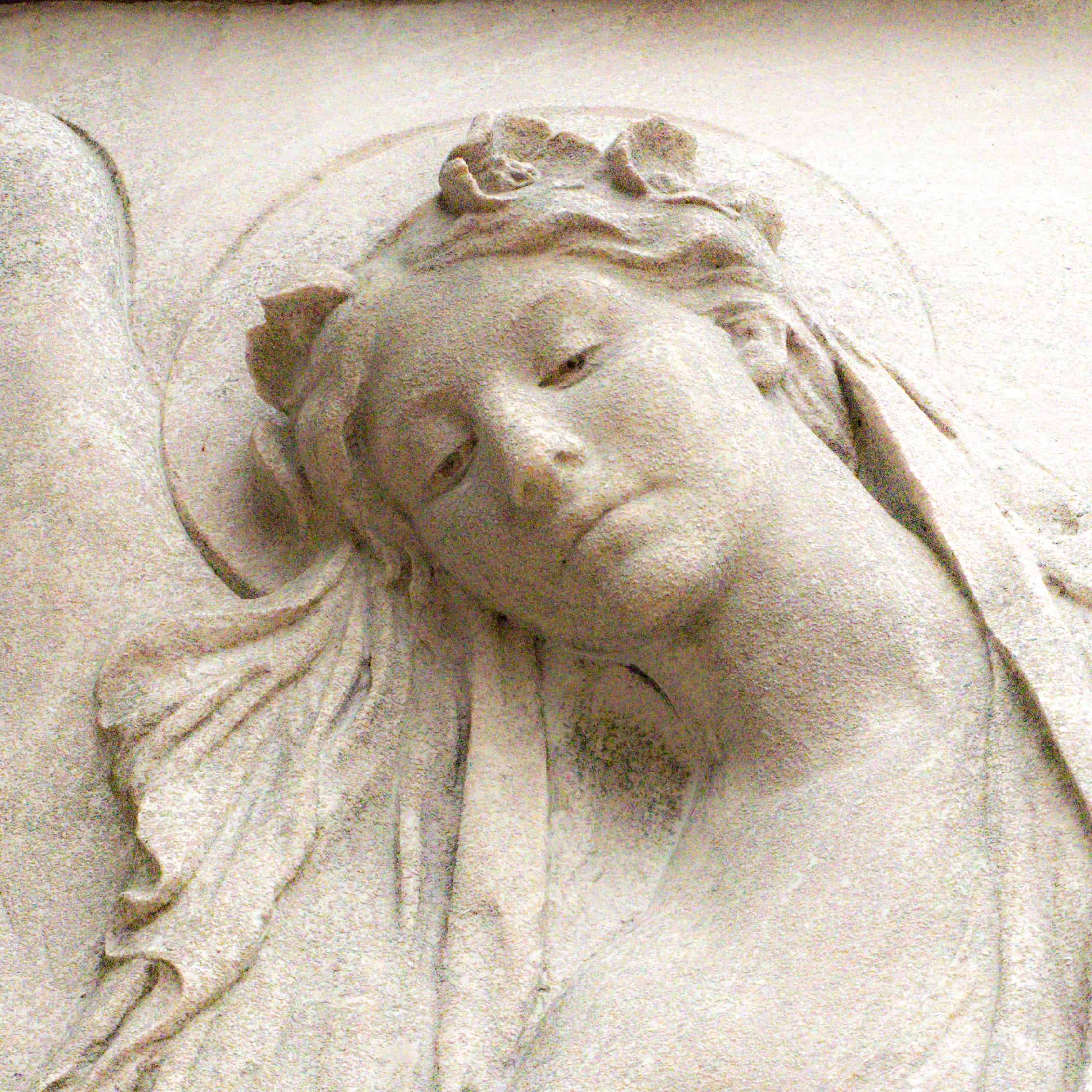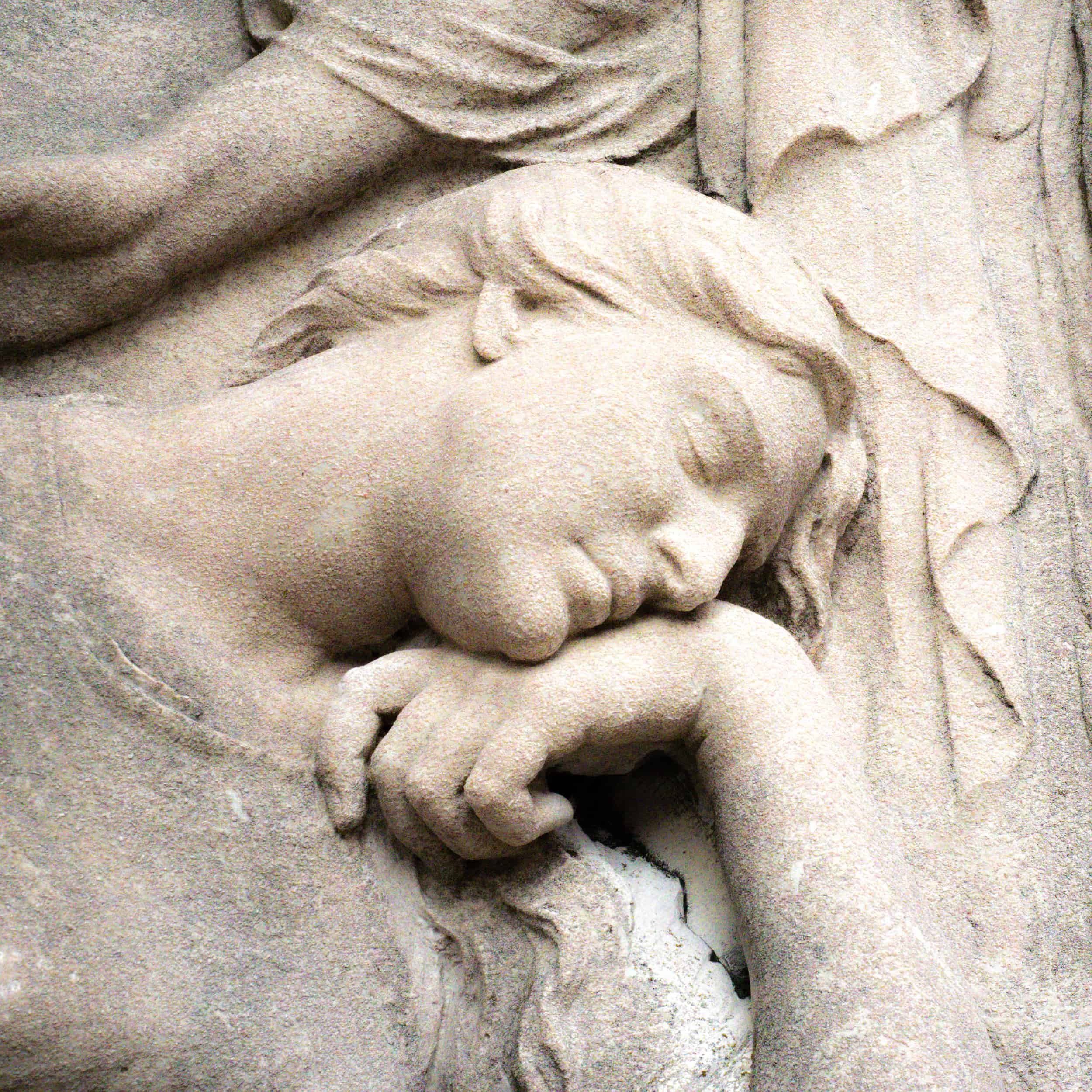While in the Boston area, I investigated the Lowell Cemetery, created in 1841. It is a garden cemetery layout, with winding roads and lovely plantings. It has a variety of monuments, many distinct family plots and feels quite mathematical in design, partly because of the continuing maintenance of the yews which define the space for many of the monument groups.
The cemetery design seems particularly suited to the modern additions—here family groups are framed by yews and other plantings..
Most garden cemeteries were originally created using large family plots with distinctive borders. Many have lost the defining markers of the edges of the family plots as fencing deteriorated and lawn maintenance became more difficult. In this cemetery they have been fashioned of long-lasting stone and remain as distinct family units.
Maria Wells worked all her life at the Lowell mills. Her life savings supplied the funds for an impressive dedication after her death. Evelyn Longman Batchelder sculpted a sensitive approach honoring the mill workers who were such an important part of Lowell history. The bas relief depicts a mill worker called by the angel of death. The woman lets drop from her hand the bobbin she has worked with for so long at the mill.
The inscription reads: “Out of the fibre of her daily tasks/she wove the fabric of a useful life/Louisa Maria Wells/Died February 20, 1886.”
The smaller monuments in this cemetery hold their own against the more substantial. This particular pair for Alanson and Lydia Crane are of a beautiful design I haven’t seen before.
As the 20th century emerged, advanced machinery was used to fabricate granite into modern shapes, as seen in the monument below.
And moving into the 21st century, the technique of laser etching has contributed to a contemporary version of the portrait stone.
